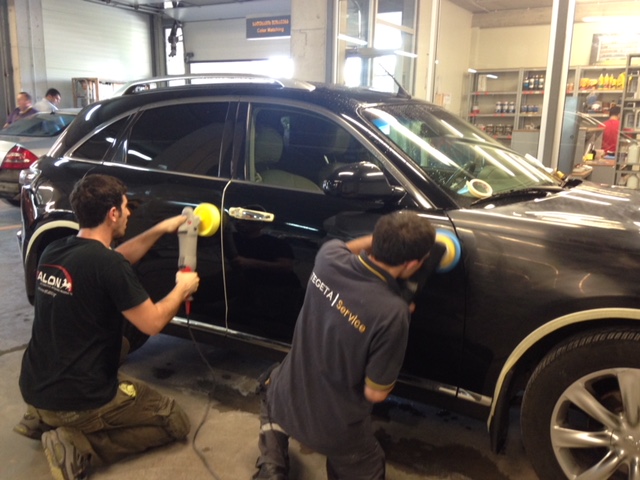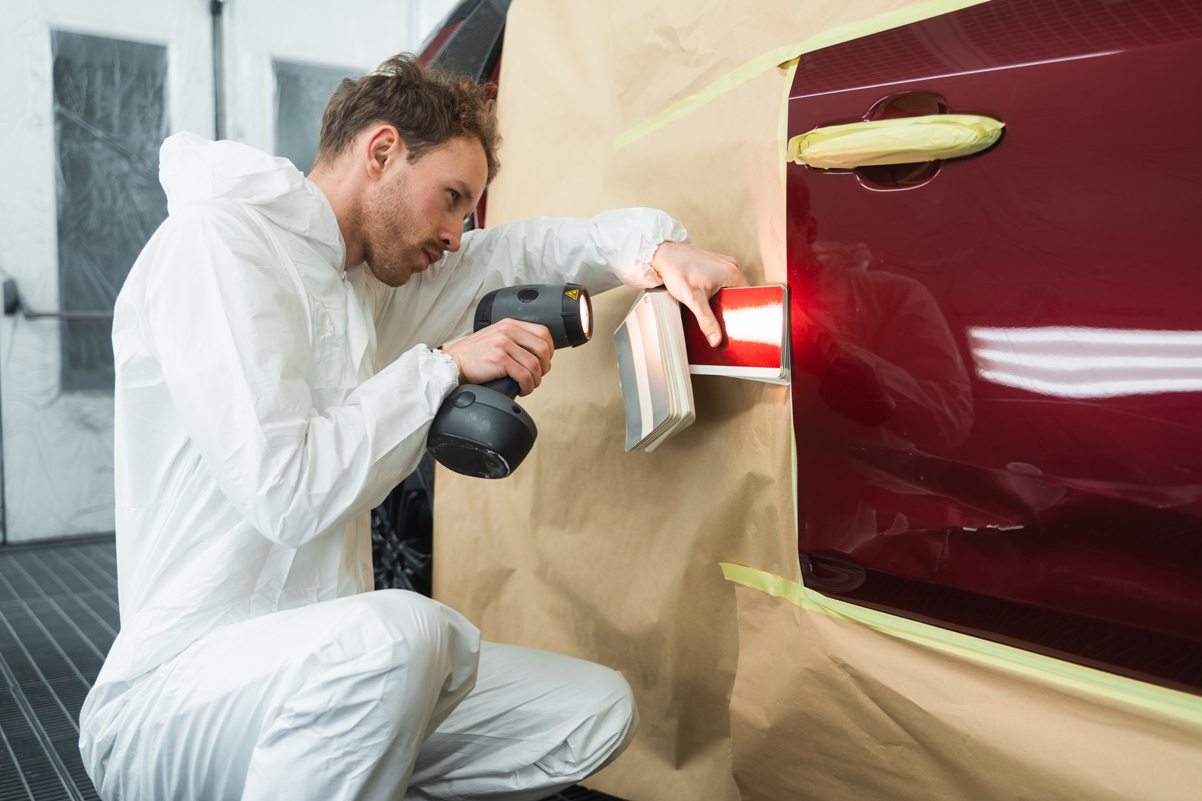Probably when you think of car refinishing job, paint polishing is not the first thing to come up in your mind. Nevertheless, it is an important process for any collision repair specialist. Firstly, when a minor paint defect occurs, in 9 cases out of 10, you will need a compound and a polisher to fix the problem. Secondly, a full car detailing could and should be an additional service offered to a customer who walked through your shop’s door.
Consumption of a polishing compound varies from one shop to another. Usually the excessive use of a compound means two things: too many paint defects revealed during the inspection process or/and incorrect polishing process. I have seen an operator pouring a quarter of a bottle to polish a fender. Also, in certain markets with poor working conditions without a proper spraying equipment, painters have to wet-sand all the repaired surfaces to remove orange peel and numerous dust nibs. It comes with no surprise that in these cases polishing compounds’ and glazes’ consumption is sky-high. What I would like to share with you in this article though is a short guide how to pick up the right polish for you. This is not the advertisement for Etalon polishing system, and my tips come from my own experience and the extensive knowledge of my colleagues and employees.
- Examine the surface to be polished. Before you decide which compound to use (yes, it’s good to have a few compounds to choose from), you need to understand the condition of paint or clearcoat you will work on. In a bodyshop usually we use compound to remove paint defects, meaning that paint is fresh. Is is crucial to know if the clear was properly baked in accordance with the manufacturers technical data sheet. If you choose too aggressive compound on still soft clear, big chances are that you will end up with excessive haze and swirls. It has nothing to do with the quality of the compound, but with the clearcoat’s chemistry instead.
- Check what polishing pads do you have available. The quality of paint rectification depends on many factors, like the polish machine, compound used, pads the compound is applied with and, an operator’s skills,indeed. So, if you do not have a quality wool pad handy, then you may need to go for more aggressive polishing compound. While if you have only rotary polisher in your tool box (read the article about polishing machines here), then a choice of medium cut compound would be a reasonable choice for safe polishing.
- Check what abrasives you have at your disposal. Nowadays one can find in a body and paint supply shop a great assortment of micro abrasive products. It is not necessary any more to remove orange peel, for example, with a polishing compound only. If you choose a film based abrasive disc P1500 first, then rectify the surface with P2000 or P2500, the entire process will take 3 times faster than a compound only process.
- Assess the ambiance and surface temperature. In case you have high temperatures in your workshop, choose a liquid polishing compound (not a paste) with oily consistency. There are polishing compounds in the market which turn to dust within first minute of use. This occurs due the high solvent content in them. These solvents evaporate very quickly when temperatures are high. You will have to add more and more compound to keep working and face an unpleasant dust spreading around.
- Avoid compounds, which require added water. You can still find the products in the market, which require adding certain quantity of water before and during the work. It will create a lot of splashes and unnecessary cleaning afterwards.
- Avoid difficult to clean compounds. I have seen otherwise good products, which are very difficult to wipe off especially from rubber and plastic parts. Such polishes will either require meticulous masking job prior polishing or long time spent on cleaning the residues. No, thanks.
- Choose a polishing compound with the best cut/gloss ratio. The times when cutting compound was leaving almost mat surface are gone for good. As a matter of fact, you can find fairly cutting compounds which leave lustrous surface with a very high gloss level. Certain brands market such products as one-step. However, you should remember that on the dark colors you may still need a finish glaze with anti-hologram properties.
- Avoid polishing compounds with silicone. Check that a bottle has a “silicone free” or “bodyshop safe” tag on it. No need to explain why.
- Avoid polishing compounds with waxes or sealants. It is very popular amongst car detailers to use so called “two-in-one” polishes, which combine abrasive and waxing properties. In a bodyshop, however, the clearcoat, albeit properly dried, still “breathe” with solvents. We don’t want to seal the pores of the paint, while solvent is still making its way out. Generally it is advised not to apply any waxes or sealants within two weeks from the paint job to avoid dieback of the clear coat.
- Prefer a polishing system with only a few polishing products available. Some brands offer just one-product system, but from real life experience it is obvious that there is still no perfect single compound for all jobs. Likewise, do not be misled by systems with far too many products.
- Avoid compounds with fillers inside. In car care and cosmetics market you may see a great variety of the polishes with filling properties. Such a product doesn’t remove scratches, but rather mask them for a limited period of time (usually until the next proper wash). The last thing a professional car sprayer needs is the angry customer coming to the shop and spotting the places where a paint defect was. A real pro will remove the paint defect, not mask it.
- Do not choose the polishing system just because it’s cheap. The cost of polishing materials in the overall bodyshop repair bill is negligible, but the spent on compound might be too long to afford.
Bonus tip. If you want to compare to compounds, do it exactly under the same conditions; for instance, split a bonnet half by half and do your test with the same polisher, same pressure, time and pad type. Do not mix two compounds on one pad in order to avoid misleading results.




